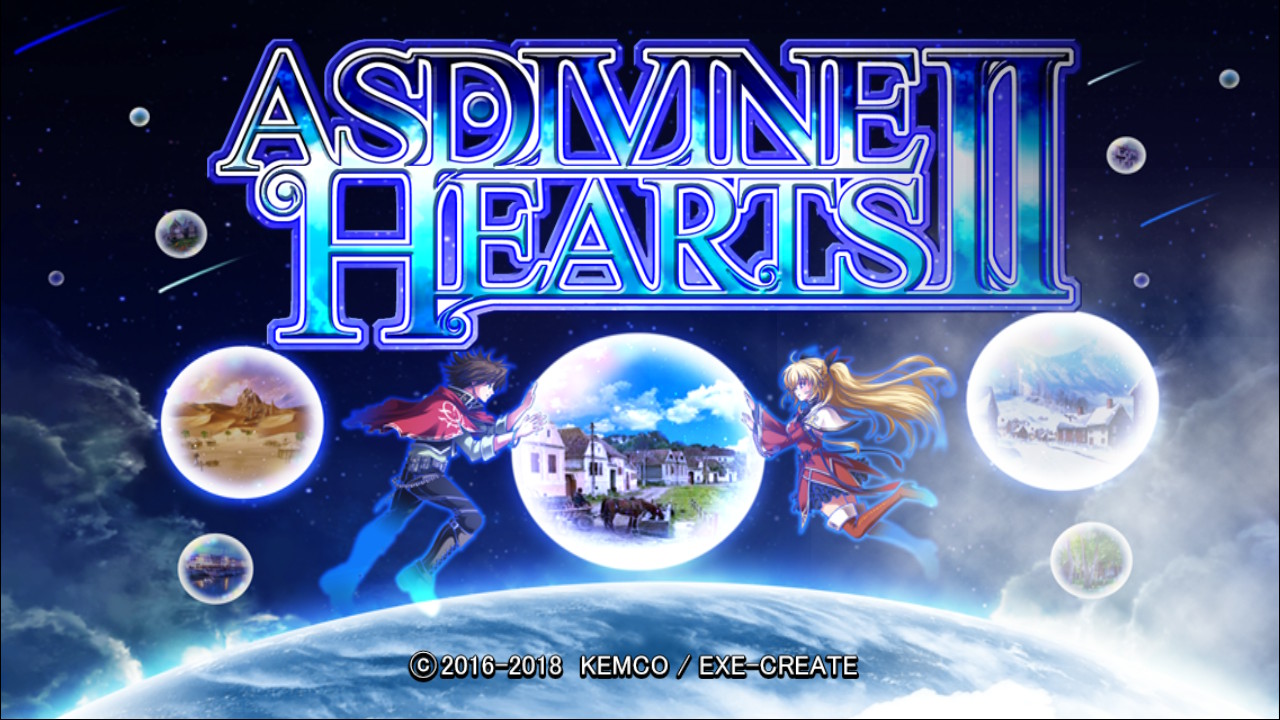[Review] Asdivine Hearts II – Nintendo Switch
Asdivine Hearts II
Nintendo Switch
Developed By: Exe
Create Inc
Published By: KEMCO
Category: Role-Playing, Adventure,
Simulation, Strategy
Release Date: 01.24.19
I’ve seen KEMCO RPGs around on digital storefronts for a while now, but I haven’t pulled the trigger on buying any. There is an obvious retro flavor to their output, somewhere in the middle of the golden era of the genre that spanned the SNES and PSX generations. I can’t help but hold a certain amount of bias against KEMCO’s recent pivot to mobile games; I despise the pay to win model which is so prevalent on mobile platforms. I mean, I know P2W is invading consoles and PC too, but in my head I just associate it more with mobile. This is all to say that when Asdivine Hearts II for the Nintendo Switch came across the review pile, I was a little apprehensive. Despite my initial misgivings (and more than a few typos in the script), I found a lot of worthwhile content in AHII – but most importantly, I discovered that the paid elements are entirely unnecessary to playing the game.
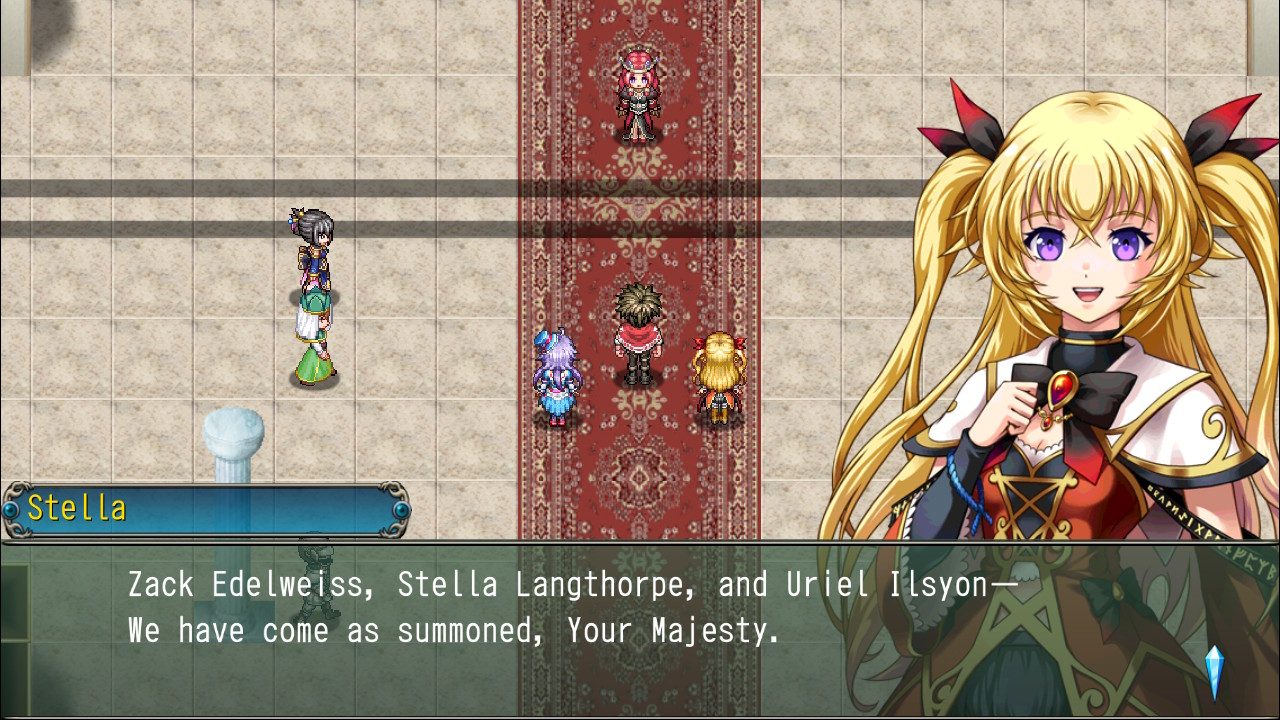
As Divine As A Recap
The first few minutes of Asdivine Hearts II serve as a recap of the first game. Simply put, the Light and Shadow Deities of the world of Asdivine were in conflict, but the Light and Shadow Progenies (humans with the ability to inhabit the powers of the Deities) put an end to it and saved the world after some adventures. Zack and his childhood friend Stella are the Light and Shadow Progenies, respectively, and make up the first two members of your party. They are joined by Uriel, a chainsaw-wielding gothic lolita maid, Pugsly, a weird dog/pig monster, Felix, a cat who is actually the Light Deity in disguise, and Nadia, the Shadow Deity.
After the events of the first game, the two Deities created an army of fairies to send to alternate worlds to oversee the spiritual well-being of those realities. One such world, Archelio, has been covered in snow for two solid years as a result of a strange imbalance of magic and the appearance of a mysterious new deity. The party travels to Archelio to attempt to uncover the secrets of the new religion spreading around this deity and the effects it is having on the world. All the while Zack must obliviously navigate the four ladies in his party vying for his attention and their fairly violent tempers toward one another. The violence is played for laughs, mostly, but it is pretty vicious at times. Asdivine seriously needs to get its Deities to anger management.
The story is incredibly charming, on the whole. Zack and the gang are a relatable, funny, and engaging cast of characters that provide a solid emotional core for the story. The world and plotlines built around that are stronger for it, even if the harem setup is a little played out and/or behind the times. Before I knew it was happening, I was invested in these characters, their relationships, and their struggles. At times the writing can get a little rough with overly forced jokes, and someone needed to take another pass at editing the dialogue, as I found several typos while playing, but on the whole the game’s narrative and storytelling direction are rock-solid.

Use The Buddy System
For the first few dungeons of the game, nothing in Asdivine Hearts II strays very far from the basic JRPG formula. Your characters are on one side of the battle screen, the enemies are on the other. You choose your actions from standard menu options like attack, magic, and guard – I didn’t notice there was no option to use items in battle because you start the game at max level. Some plot shenanigans reset you back to a more basic level not too far after you travel to Archelio. You also fill out your party, allowing you access to the battle system’s main mechanic, the Buddy System. Ok, it’s actually just called “teams,” and Buddies are just what Stella’s monster companions are called, but calling it the Buddy System amuses me more so I’m going with that.
The Buddy System sees two of your party members team up during battle, taking their actions together. Stella, instead of teaming up with another character, buddies up with monsters you recruit by releasing them from jewels you find as the game progresses. One character is the lead, while the other is in a support position behind them. The HP of both characters gets pooled together, while MP is tracked by the individual. The leader can attack, guard, or use magic/skills. The support character can use magic, items, or a limited selection of their skills. Support characters can’t use skills that directly attack enemies, but they do have an additional action called “support,” which will strengthen whatever action the lead character takes.
Additionally, once you’re buddied up, your characters can use ultimate techniques called Trust Charges. A Trust gauge fills up at the bottom of the battle screen, right over the turn order meter. You can use the full gauge when it hits 100% to unleash your most powerful attacks, or eventually you learn smaller attacks called Microbursts that only use 10% of the gauge instead. You can also use Unison attacks by having both members of a team cast complimentary spells that combine into a far more powerful technique. It all adds up to some gameplay that is familiar to JRPG fans, while still having a unique, fresh feel.
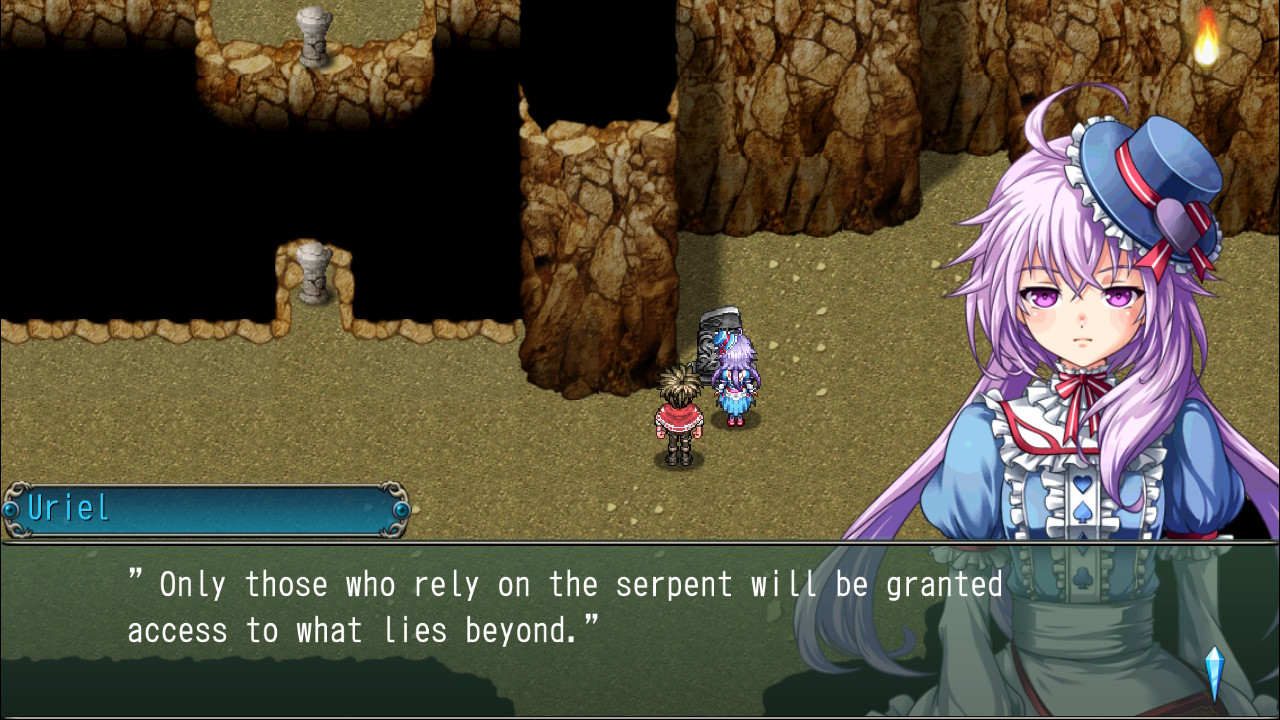
Getting Properly Equipped
There are three types of items that can be equipped in Asdivine Hearts II: weapons, armor, and jewels. Armor is the most basic and boring of the three, as you just equip it and that’s it. There’s no special mechanic like there is with the other two. Weapons can be upgraded in the menu under the “custom” tab. You can use less powerful weapons to give your preferred armaments additional experience points, or transfer effects like poison or paralysis between weapons. Jewels are equipped on a 5×5 grid called the Rubix. Each jewel takes up a set amount of space, and configuring the jewels in a way to maximize your space is sort of a cool minigame in itself.
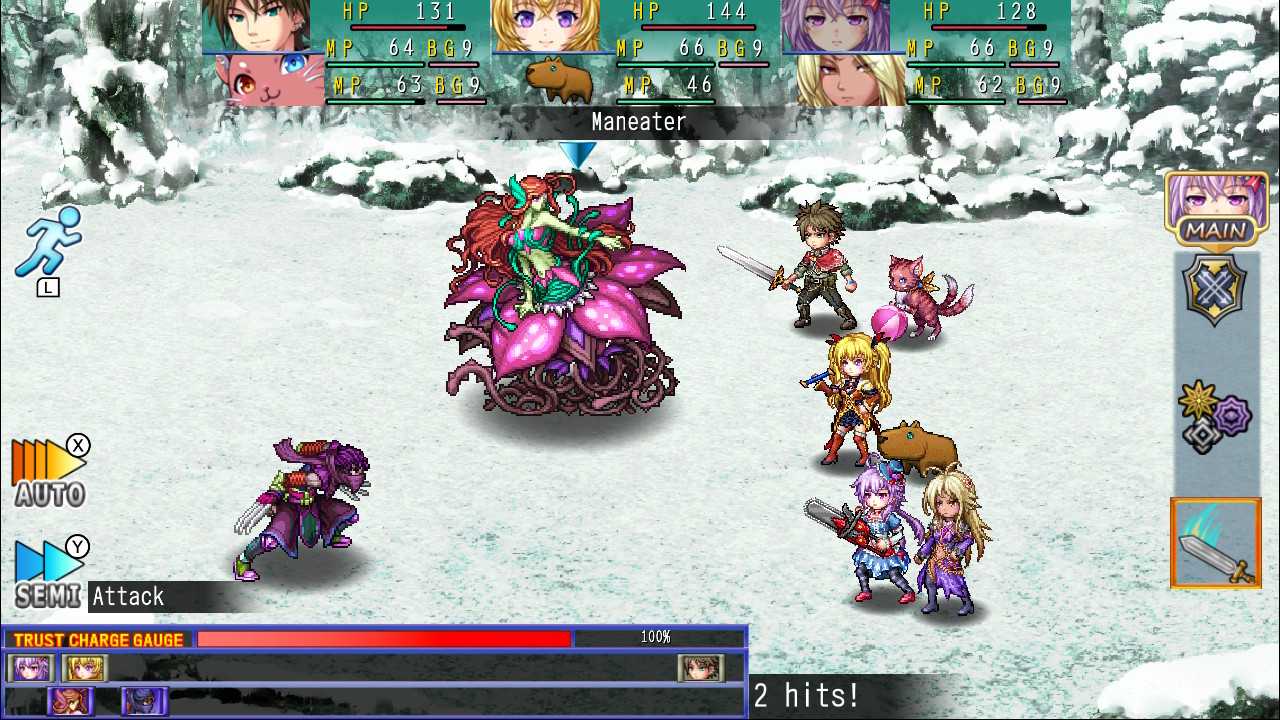
How Does Your Garden Grow?
The Garden is another neat little minigame in Asdivine Hearts II, albeit one that requires no skill whatsoever. It is accessible at any time (after you unlock it, that is) through the menu. You have six plots in your garden, and you can choose one of three different structures to fill them. Planters allow you to plant seeds, and after a relatively short time you can go back to the garden and harvest fruits from the planters. You can use the fruits to raise various stats for your characters; it’s a simple, low-impact way to get stronger characters without a grind. You do have to find seeds, though, which isn’t always easy. They can be bought from special shops and dropped by enemies.
You can also install a weapon shed in your garden plots, which expands the number of weapons you can carry in your inventory. Personally, I found this useless as I would always immediately use any extra weapons to strengthen the weapons I was using. Finally, you can use a void to send Stella’s Buddies that you aren’t using away on missions for the Mercenaries’ Guild in exchange for Guild Coins. Guild Coins can be exchanged in the guild for special items like seeds, Buddy jewels, and other specialty items. You can use items called Accelerators to instantly complete any Guild missions or grow any seeds if you don’t like waiting, but Accelerators are pretty hard to get your hands on. You can find a few scattered throughout the world, but for the most part you have to buy them from the shop in the menu.
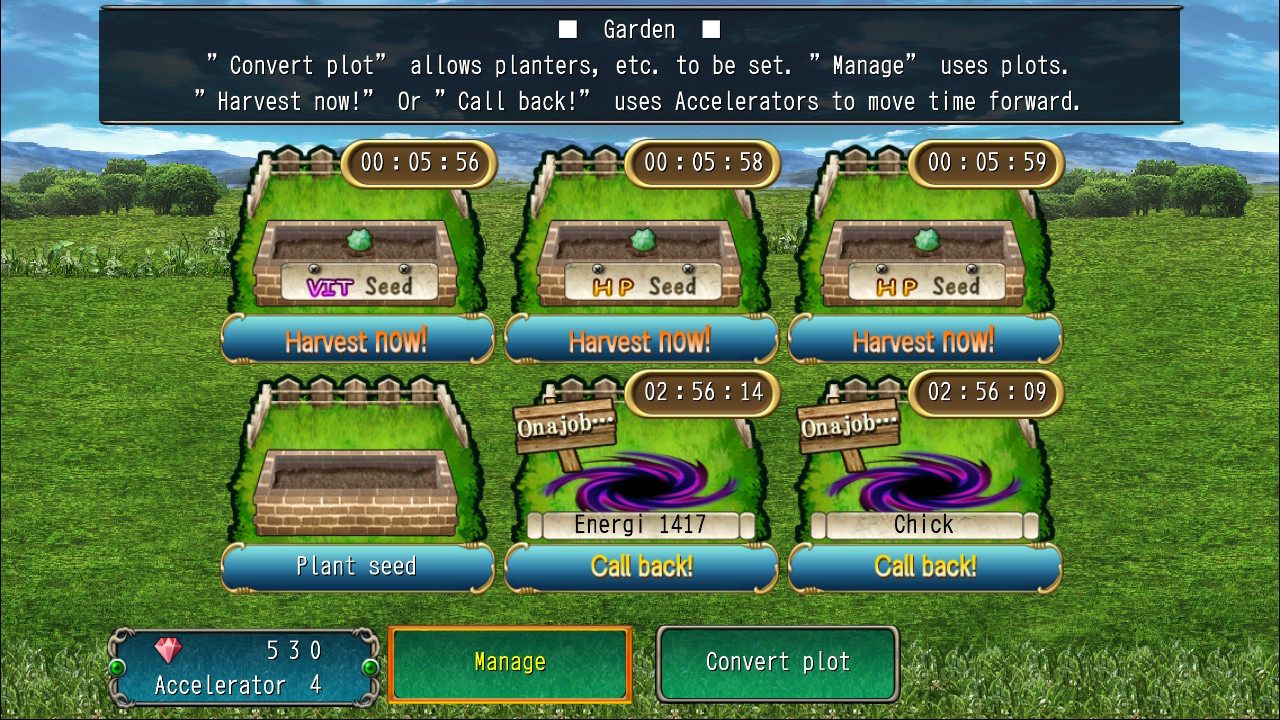
Specialty Stores
The game’s menu shop is one of its biggest surprises. It is rife with opportunities for microtransactions, but there aren’t any! I was truly surprised by that. While there are some light pay to win elements to the purchasable DLC, all that really does is increase experience and gold earned. The game is well-balanced enough on its own that those items are actually probably more of a hindrance to enjoying the challenge the game poses. Anyway, the shop menu: you can buy items using Holy Stones which are randomly dropped after battles. The basic shop lets you buy weapons, armor, and basically the same stuff you can buy as DLC. Again, I was surprised that you can’t buy Holy Stones using real money, so kudos to the developers for resisting that temptation.
One other option in the menu shop is the ability to play a game called Safe Crackers. Safe Crackers isn’t really a game so much as it is a random item generator, or “loot box” if you’re into controversial buzzwords. Again, no actual money is involved in Safe Crackers, which is cool. You pay to play using Holy Stones or Tickets. Tickets are awarded to you every six battles, and can be randomly dropped by enemies or found in chests as well. There are three variations of Safe Crackers you can play. The first lets you pay 100 Holy Stones to play once or 1,000 Holy Stones to play 11 times, and rewards you with a super-rare, high-quality weapon each time. The second has the same pay structure, but instead rewards you with jewels. Some of these are Buddy jewels, while some contain cool new costumes for your characters to wear in battle. Finally, you can pay 1 ticket for one play or 10 tickets for 11 plays to get some more basic equipment. I used the last one to generate weapons to level up the good weapons I got from the first Safe Crackers game type. Playing Safe Crackers is a great way to stay ahead of the difficulty curve, although if you prefer a more challenging game it does lower the game’s difficulty a little bit.
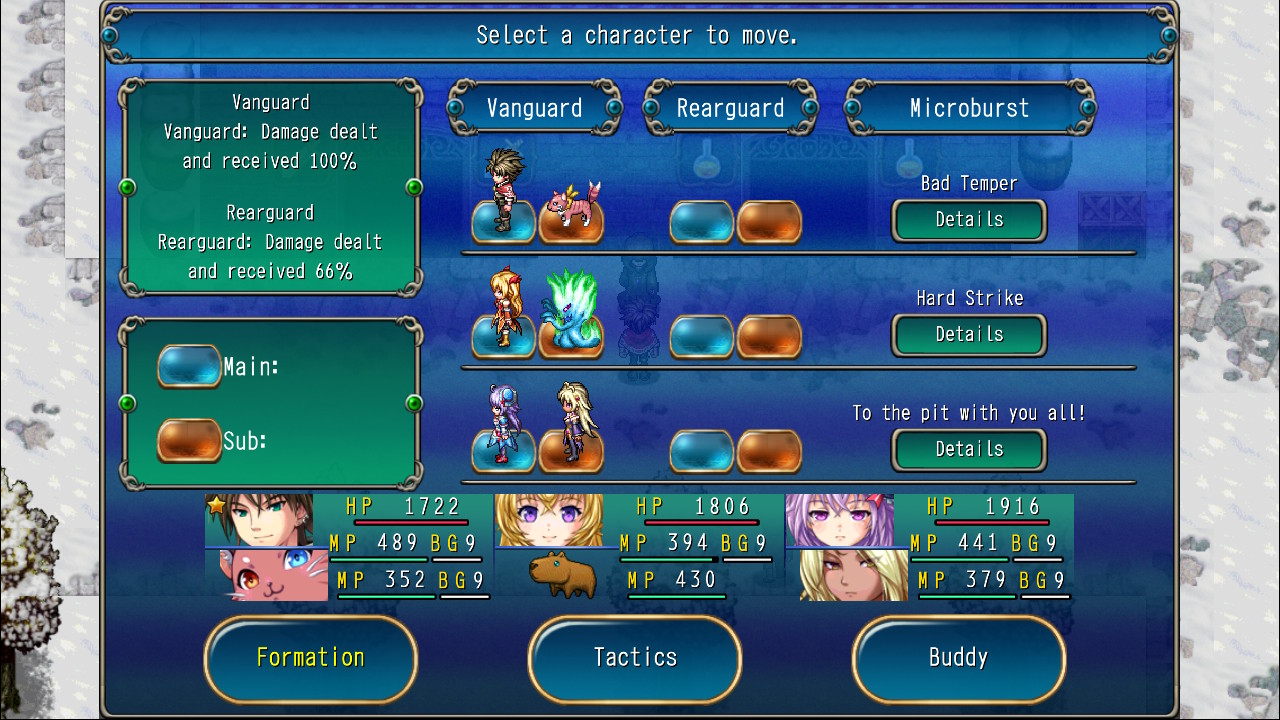
Graphics Between Generations
The overall art direction of Asdivine Hearts II, from the narrative to the graphics to the music, are all heavily inspired by the era of JRPGs spanning the SNES and PSX, as I mentioned in the opening. The graphics are a strange mix of those two systems’ generations, with some character models having a 16-bit look to them, while others have a relatively more-detailed 32-bit feel. The backgrounds are a little sparse at times, particularly inside castles, where everything just feels like empty space. However, some locales, such as forests and caves, feel alive and fully realized. It’s a strange dichotomy, but it wasn’t one that took me out of the game. The music is lively and fun, and accentuates the action and story well. There wasn’t really one track that stood out over all the others, but it is competently arranged and sounds good, which is really all you can ask for.
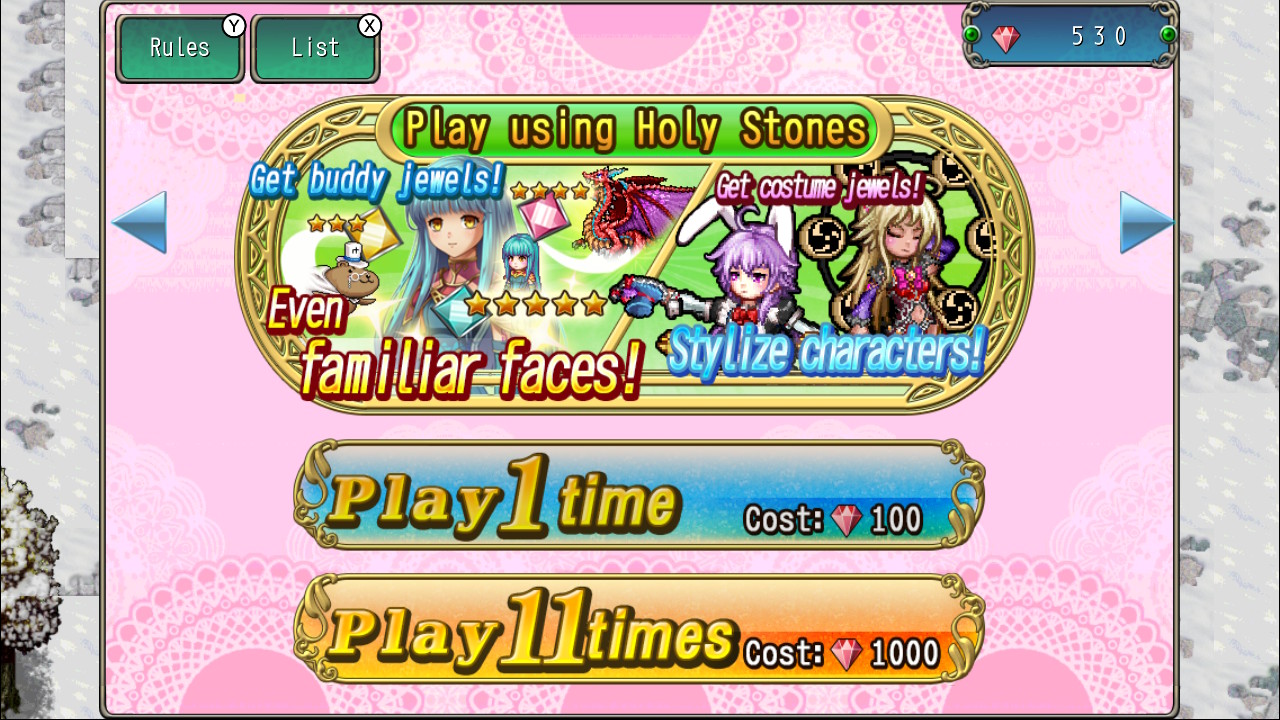
Playability
Asdivine Hearts II has no touch or motion controls, so you can play it docked or undocked as you prefer. Personally I didn’t see a very big difference between playing it docked or undocked, so I don’t really have a recommendation. The graphics are solid and generally look the same whether you’re playing on the Switch’s screen or a TV. I don’t even have a controller recommendation, as the controls are simple and don’t rely on timing or anything, so a Joycon is just as good as a Pro controller. Although I spent all that money on the Pro, so I use it as often as I’m able.
TL;DR: Surprisingly solid JRPG with a fresh battle system and good, retro-inspired aesthetic.






